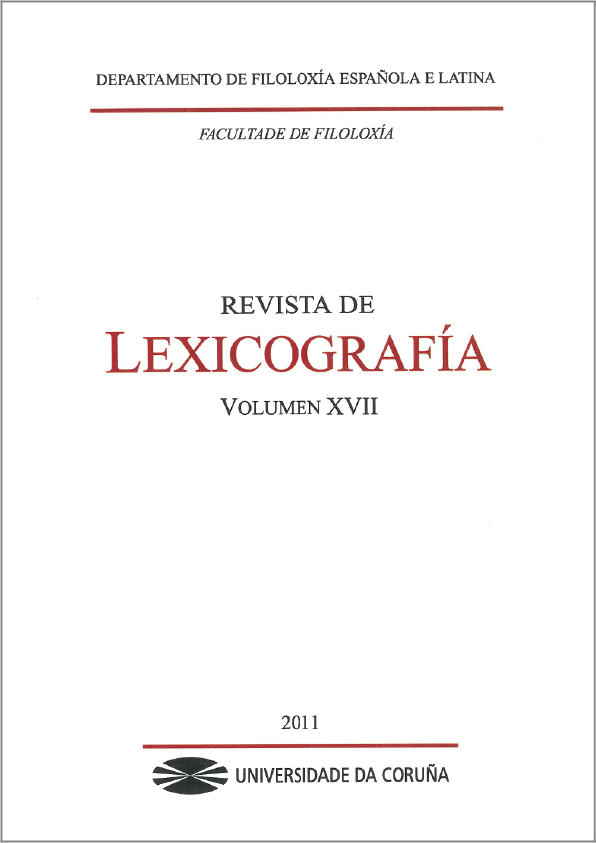ARDIDEs: A redaction tool for a diachronic dictionary of Spanish
Main Article Content
Abstract
Keywords:
Downloads
Article Details
References
Atkins, Sue y Michael Rundell (2008): The Oxford Guide to Practical Lexicography, Oxford, Oxford University Press.
Campos Souto, Mar y José Antonio Pascual (en prensa): «Dalle que dalle: la filología como intermediaria en el salto de la cantidad a la calidad».
Curran, James R. (2004): From Distributional to Semantic Similarity, Tesis doctoral, University of Edinburgh.
Gelpí Arroyo, Cristina (2003): «El estado actual de la lexicografía: los nuevos diccionarios », en A. M. Medina Guerra, coord., Lexicografía española, Barcelona, Ariel, pp. 307-309.
Hoffmann, S., S. Evert, N. Smith, D. Lee y Y. Berglund Prytz (2008): Corpus Linguistics with BNCweb: A Practical Guide, Frankfurt-Main, Peter Lang.
Kirkness, Alan (2006): «Lexicography», en A. Davies y C. Elder, eds., The Handbook of Applied Linguistics, Malden, MA, Blackwell, pp. 55-81.
Stefan, Evert (2008): «Corpora and collocations», en A. Lüdeling y M. Kytö, eds., Corpus Linguistics: An International Handbook, Berlin-New York, Walter de Gruyter, pp. 1212-1248.
Pascual, José Antonio y Carlos Domínguez Cintas (2009): «Un corpus para un Nuevo Diccionario Histórico del Español», en A. Enrique-Arias ed., Diacronía de las lenguas iberorrománicas: Nuevas aportaciones desde la lingüística de corpus. Madrid-Frankfurt, Vervuert-Iberoamericana, pp. 79-93.
Pascual Rodríguez, José Antonio y Rafael Pérez García (2007): Límites y horizontes en un diccionario histórico, Salamanca, Diputación de Salamanca.
Pascual Rodríguez, José Antonio y Rafael Pérez García (2008): «Estado del nuevo diccionario histórico de la Real Academia Española», en P. Garcés García, coord., Diccionario histórico: Nuevas perspectivas lingüísticas, Madrid-Frankfurt, Vervuert-Iberoamericana, pp. 11-15.
Real Academia Española (1960-1996): Diccionario histórico de la lengua española, Madrid, Imprenta Aguirre.


